Standing on a cratered moon, Singularity, the villain of BAYONETTA 3, proclaims that no matter how much Bayonetta fights, she will never be able to run from the truth. This truth being that she has lost to Singularity in every dimension and this one would be no different. In response, Bayonetta proudly claims that “the truth is what I make it!” and unleashes an assault of all versions of herself across every multiverse. Ultimately, she dies after delivering a finishing blow, being dragged into hell in the arms of her (at least in one dimension but not this one) baby daddy Luka and left to be succeeded by her (in at least one dimension but not this one) daughter Viola. Credits rolled, and I felt (at least in this dimension but probably in all of them) let down by one of my all-time favorite video game franchises.
Almost five years ago BAYONETTA 3 was announced to be in development for the Nintendo Switch. At that time, I hadn’t pulled the trigger on getting a Switch just yet. It was 2017, the system was still new and the only big exclusive game out for it in my eyes was MARIO ODYSSEY—SPLATOON 2 meant nothing to me as someone who had also skipped the Wii U, and I was indifferent to the direction BREATH OF THE WILD was taking the Legend of Zelda series (I would end up changing stances on both of these games eventually). Not only was BAYONETTA 3 announced, but the first and second games would be ported to the Switch as well, giving BAYONETTA 2 a new lease on life on a console that was basically already outselling the Wii U.
“Fine” I thought, “I guess I have to get a Switch now.”
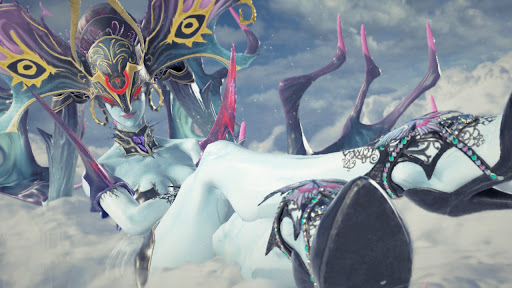
Lady Dimitrescu could never.
Bayonetta has meant a lot to me, in the ways the original two games meant so much to a lot of people. There’s a lot projected onto this character—and for good reason. As a bourgeoning young queer of 15 when the first game dropped, I was immediately obsessed: Here was a tall, confident woman who reveled in baring it all to everyone, unabashed, unashamed, and without any self-doubt. It’s the type of classic hyper-femme sexuality we’ve seen queer communities take up when it was featured in movies, only now in video game form. Bayonetta even has a best friend and fellow Umbran Witch sister she lives with, another feature for queer media critics to glom on tot.
There were always strong and hyper-sexualized women in games, but Bayonetta was something new—she knew she was sexy, and loved making her onlookers uncomfortable and confused with that confidence. She uses stripper poles as weapons, performs provocative dances to summon demons, sucks on lollipops to heal, and puts her enemies into a St. Andrews Cross to flog them as “torture.” She was demonic, damned for all eternity, chided by angels, constantly told she was unruly, and she would respond with a wink and kiss. It was representative of a newer wave of feminism that was pro sex work, and queerness in a medium that is still figuring out how to talk about marginalized identities at all. Even if this radical representation wasn’t the developer Platinum’s intention, they had constructed a character that would be taken up and discussed in ways that few video game heroines ever had.
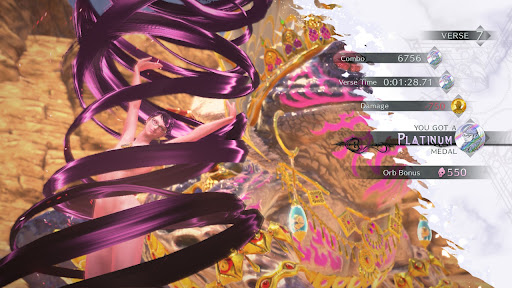
The serotonin I get from a platinum Bayonetta medal is unmatched.
Character aside, those first two games are also just fun as hell. Witch Time (Bayonetta’s ability to slow down enemies with a perfectly timed dodge) fundamentally changed action games for a new generation and being able to equip weapons on both your arms AND your legs brought a whole new level of ingenuity to the genre. The massive boss battles that have you climbing all over giant angelic beasts, the Wicked Weave mechanic that rewards you with a demonic punch or heel stop for completing a combo, and the amazing rival character of Jeanne that would pop up throughout the game to skill check you. Platinum created a framework for future action-adventure games, reminding everyone of what made the DEVIL MAY CRY series so good while also showing how it could expand on it. They would continue to explore more ways to complicate the genre, trying a more JRPG type action game in NIER: AUTOMATA and even controlling two characters at once and using them in unison to pull off combos in ASTRAL CHAIN. Platinum put action games back in the mainstream, and BAYONETTA was their flagship.
This is all to say that the expectations for BAYONETTA 3 were high as both another stint with the iconic witch and an action game. The time between the sequel and the third entry was long, Platinum had tried out so many different styles of action games, maybe it was all leading up to something even bolder for BAYONETTA 3.
Unfortunately, it all led to a huge disappointment.

Summoning a giant demon lady to punch a giant demon bat is very Bayonetta.
BAYONETTA 3 is still an over the top, bonkers adventure with kaiju battles and multiple different styles of gameplay. The boss battles can be appropriately ridiculous, one has you controlling a big demon woman using bubbles from her sky bath to capture the boss. Another, a giant frog turned opera singer that plays a rhythm game accompanied with demons holding up glow sticks. The normal combat though can feel like it’s trying to do too much, something I’d never imagined saying about the series. Bayonetta has always been tight and simple in its mechanics: punch, kick, dodge, repeat. Maybe throw in a torture move or an Umbran Climax. BAYONETTA 3 now lets you summon huge monsters during battles, meaning that the battlefields are larger. This can look cool, but while summoning a demon you can’t move, so it kind of ends up slowing down the combat—having my demon wail on an enemy tended to push them so far away from me on the battlefield that I lost my combo racing to try to get back to them. Maybe I should have mixed up the styles more, but because summoning a demon stuns enemies and can keep groups of them busy, it’s always just easier and quicker to use it as the default.
Another major change: you can only have one weapon equipped at a time, and the weapons are upgradable through a skill tree that feels tedious and unnecessary. The weapon selection is great—it shocks me that it took three games to give Bayonetta a lance type weapon given her demonstrated capabilities with a pole. And weapons now determine mobility through the “demon masquerade” system, where Bayonetta will take the form of a demon to deliver combo finishers but also to maneuver in the map. But this is a lot, and I found myself overwhelmed and wondering why I needed so many different types of jumping abilities for a game that isn’t a platformer. It’s fun turning into a bouncy frog lady or gliding as a harpy, but I never felt like any one couldn’t get the job done of another, and some were just not as easy to navigate with. The gameplay in BAYONETTA 3 is not BAD but it just doesn’t really feel like a Bayonetta game.
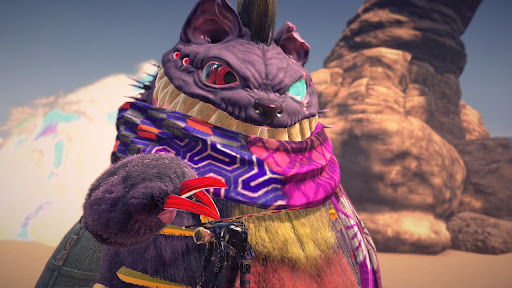
Chesire is great, I want a Cheshire plush.
The story, on the other hand, is totally wrecked. In short, Bayonetta’s world is on the brink of collapse and new character Viola says they have to jump around the multiverse getting devices to power up something to take out a new bad guy. The specifics don’t matter because the overarching plots are always nonsense in these games, but the real issue is that Bayonetta lacks personality throughout the majority of the journey. She watches multiple versions of herself and her childhood friend (a.k.a. queer-coded girlfriend Jeanne) die before her eyes and has no reaction to any of it. At one point she even kills a possessed version of her mother, a tragic figure in the BAYONETTA series whose death was a catalyst for the events in the sequel, and has no response to it.
Instead, where Bayonetta exhausts her dialogue and emotions is with Luka, the side character from the previous games that she has never taken seriously and always ridiculed for the mere minutes he was on screen. Suddenly this character has a whole backstory of coming from a line of “truth seekers” that I guess are these crystal-encrusted people living in the woods? And he can transform into a wolf that’s apparently supposed to be your rival character throughout the game? Bayonetta has apparently always loved him, in one dimension they have a kid (Viola), and through the power of parental feelings and heteronormative love they’re able to beat Singularity?
…it’s bad.
It’s especially bad for a character whose whole identity has been sexual liberation and not caring about whose watching. I’m not saying that her ending up with Luka couldn’t be good, but it’s just so half-assed and rushed and erases too much of her personality in the process. She doesn’t care about her mom or her lifelong friend anymore, or even other versions of herself, it’s all just about Luka suddenly, and crammed into the last 20 minutes of the game.
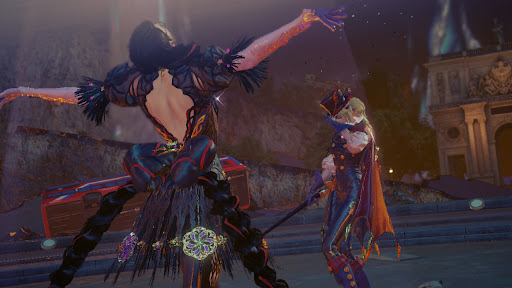
It’s giving Off-Broadway vibes.
But the true tragedy is that BAYONETTA 3 feels more theatrical than it does fun or sexy. Bayonetta’s main design feels doll-like as opposed to skintight and flowing like in the last two games. There’s something about the poofy shoulders, flowy skirt, and hair braided into a bow on the back that feel more childish than sexy. Bayonetta used to look and move like a burlesque dancer, but now she feels tacky and only occasionally charming.
That was a constant feeling throughout most of the game. My jaw never dropped in admiration or delight in the ways the last two games made me feel. Instead I was laughing at Bayonetta for being so stiff or passive, for proclaiming some deep interdimensional love for a man who hasn’t even really talked until this game, for ripping her heart of her chest to summon her strongest demons instead of dancing on the floor while the camera ogled her. I sound like a pervert, but so was Bayonetta—that’s what we loved about her.
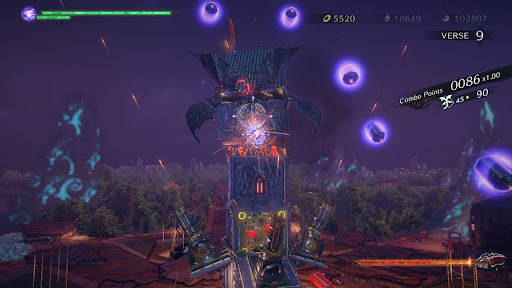
Fighting the iconic Umbran Clocktower from the previous games is a high point.
Was BAYONETTA 3 worth the wait? No. But I also don’t feel that it has to be the nail in the coffin for a beloved franchise and character. The central issue is that Bayonetta as a queer, pro-sex icon was maybe never the intent on the part of her creators or it at least become incredibly less important for them with this last installment. That doesn’t make our connection and reclamation of her any less valuable or important, and active against-the-grain engagement of media is how we even got to having this idea of her to begin with. She was never actually explicitly queer, and she has never said anything pro-sex work, those are just the ways that we as people who struggle finding characters we relate to have framed her to feel more included and recognized. We did work to make her be the thing we needed her to be for us.
If anything, seeing the ways that a character can be suddenly and radically altered should be a reminder that these fictional characters can be, and always have been, whatever we need them to be. I don’t think we should be so quick to drop characters that have meant a lot to us or who have qualities that can influence the types of radical characters we want to see in games. BAYONETTA 3 reminded me that Bayonetta was never my own, and that it has always been more about how I have taken her up to be important for myself.
This series is far from perfect, whether you look at just characterization or even the gameplay, but Bayonetta, both the video game series and the character, have been so important to me. BAYONETTA and BAYONETTA 2 have been my comfort games. I’ll play through them in between games. I’ve unlocked the nunchucks in the first and have platinumed the majority of the levels in both. All of that still exists. Hell, maybe I’ll go back to BAYONETTA 3 in due time and take it for what it is, an interesting over-the-top action game that maybe doesn’t always work perfectly, but can still be a thrilling ride. In a few years I’ll be playing through the sequel again and think that it sucks that the third one wasn’t great, but it’ll be a fleeting thought, and nothing that racking up a huge combo beating up a demon flower lady in hell who I just had a dance off with to save my girlfriend can’t fix.


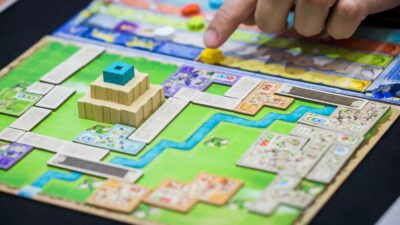
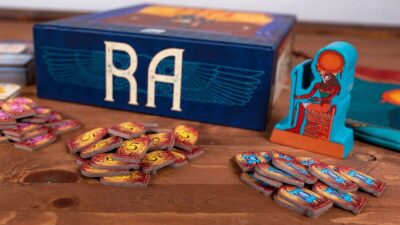
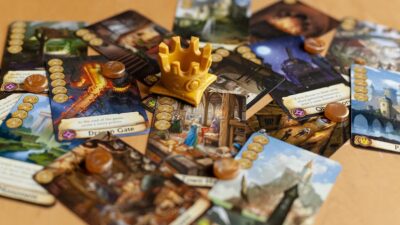



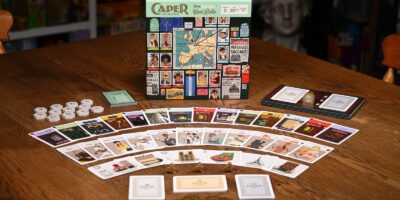





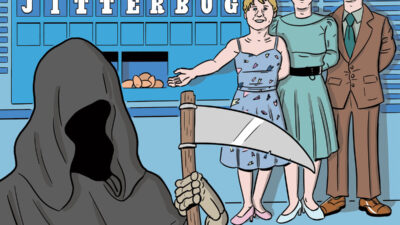

Comments